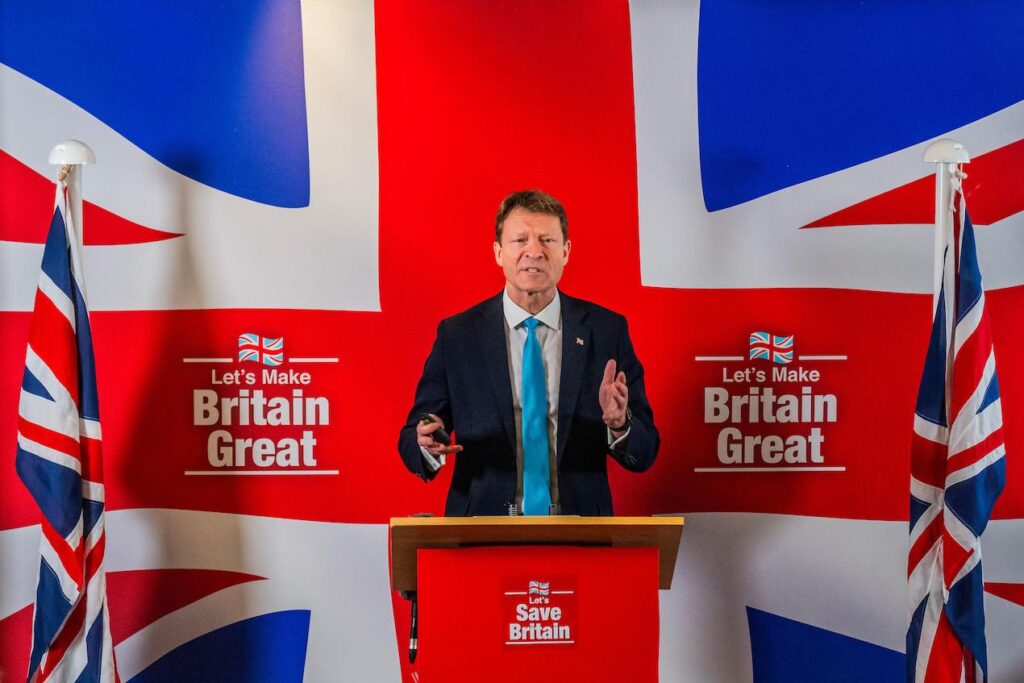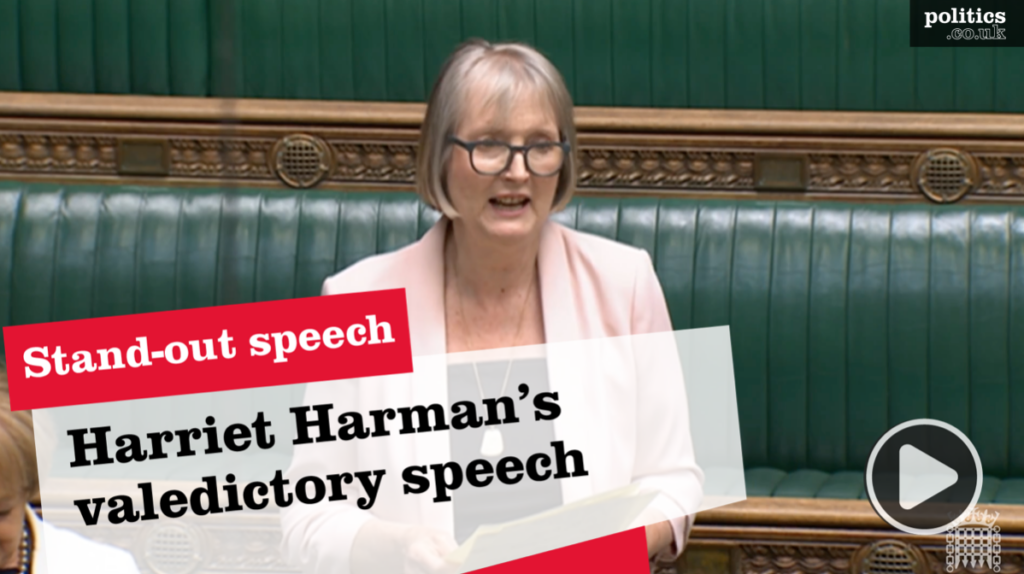The below content first appeared in Politics.co.uk’s Politics@Lunch newsletter, sign-up for free here and never miss this daily briefing.
Keir Starmer, along with the rest of Labour’s shadow cabinet, spoke at a major campaign rally in Essex this morning to unveil six shiny, new pre-election pledges.
Forearms exposed and collar undone, Starmer shunned his usual lectern and opted instead to peruse the open-plan stage. His speech — the substance of which focussed on Labour’s plan to “rebuild hope” — was delivered solely from rolling autocue prompts.
Draped behind Starmer were six multi-coloured curtains boasting his new “pledges” (Labour prefers “steps”). They read from left to right: “Deliver economic stability”; “Cut NHS waiting times”; “Launch a new Border Security Command”; “Set up Great British Energy”; “Crack down on antisocial behaviour”; and “Recruit 6,500 new teachers”.

These, of course, are far from Starmer’s first set of “pledges” or “steps”, or however you wish to refer to them. Indeed, in another major speech in early 2023 — mirroring the prime minister’s own pledge-heavy New Year relaunch — Starmer debuted five, fresh “missions”.
It was a strategy borrowed from academic Mariana Mazzucato, who argues for “mission-driven” governments to transform broad challenges into concrete goals; Mazzucato has memorably referred to NASA putting a man on the moon as the “archetypical historical mission”. While Starmer boasts somewhat less lofty goals, the messaging remains the same: Labour will be bold in government.
But Starmer’s missions have since attracted a large share of criticism. The pledges on economic growth, crime, the NHS, clean energy and breaking down barriers to opportunity were quickly dismissed as too abstract to communicate to voters straightforwardly.
Starmer’s soft reboot today, then, is recognition that before he centres his “missions”, Labour must outline its “first steps”. (To engage further with the semantic minutiae: a “mission”, politically speaking, is concerned first and foremost with ideological intent; “steps” are about on-the-ground delivery and discernible policy advance.)
Starmer’s antics today, therefore, don’t point to a full rebrand per se; but rather a subtle reframing of the party’s offering as an election nears.
In this way, more significant than the substance of the “steps” — with each new pledge corresponding with a broader “mission” — is how they are being styled and sold to the public. Through 2023, Labour’s “missions” were sold as belonging to the party at large and, specifically, to a lucky shadow secretary of state. For instance, shadow energy secretary Ed Miliband owns Labour’s plan to “Make Britain a clean energy superpower”. (Tellingly, in the Labour leader’s most recent reshuffle, none of his mission-owning shadow cabinet ministers were turfed out).
But these latest “steps” — both together and individually — are unmistakably Starmer’s.
Take Labour’s new lead advert — coming to a marginal constituency near you: it features, on the far left, a black-and-white photo of Starmer, with his sleeves rolled up and sporting thick-rimmed spectacles. Only then do you notice the bold writing beginning: “My first steps for change”.
This design means that before you even arrive at the substance of the “steps”, you are met with Starmer’s steely gaze. And at Labour’s campaign event today, while each shadow secretary of state delivered a short speech, it was left to Starmer — the only tie-less man and only individual sans lectern — to bring his “steps” together.
In sum then, Starmer’s “steps” have a strong presidential theme — a bold strategy for a leader whose main criticism is that he has failed to cultivate any kind of mass popular enthusiasm.
As such, there were clear echoes of Tony Blair in Starmer’s stunt today: the “pledges” and their accompanying card were, initially, a Blair gambit. In 1997, the then-Labour leader’s signature approved each pocket-sized pledge card. Today it is Starmer’s.
Of course, there are manifest risks with such a highly-personalised pitch. The Conservative campaign at the 2017 election is frequently referenced in this regard, after wannabe president Theresa May fell flat with the public. But consider also this example: in January 2023, Rishi Sunak debuted five new “pledges” at the apparent peak of his political power. But those days when the PM’s approval ratings sat far above his party’s seem distant indeed.
As far as the Labour leader is concerned, there is a sense that — despite his party’s towering poll lead — he has yet to fully hone the personal case for a Starmer administration.
Starmer’s latest “steps” would appear to show him leaning into this argument, and confronting said criticism head-on.
Subscribe to Politics@Lunch
Lunchtime briefing
Conservative MPs among those urging Rishi Sunak to halt plans to ‘max out’ North Sea oil
Children should not be taught there are ‘72 genders’, says education secretary
Lunchtime soundbite
‘Yes of course I am staying. I love being an MP, I love my constituents, I love my home in North Yorkshire, it is wonderful, and I love being able to get back there’
— Rishi Sunak tells ITV’s Loose Women programme he will stay on as an MP even if the Conservative Party loses the next general election.
Now try this…
‘Is Gordon Brown coming back? Kind of.’
Politico’s Esther Webber writes that Tony Blair is not the only former prime minister eyeing a comeback as his party prepares for government.
‘Labour takes direct control of selection to replace Jeremy Corbyn in Islington North’
PoliticsHome reports.
‘Do Tory defections to Labour herald a realignment?’
David Gaukes writes for The New Statesman that the liberal centre-right is not yet shifting as a bloc to Keir Starmer’s party. (Paywall)
On this day in 2023:
Senior Brexiteer accuses Sunak of scrapping only ‘trivial’ EU laws in Brexit ‘bonfire’











